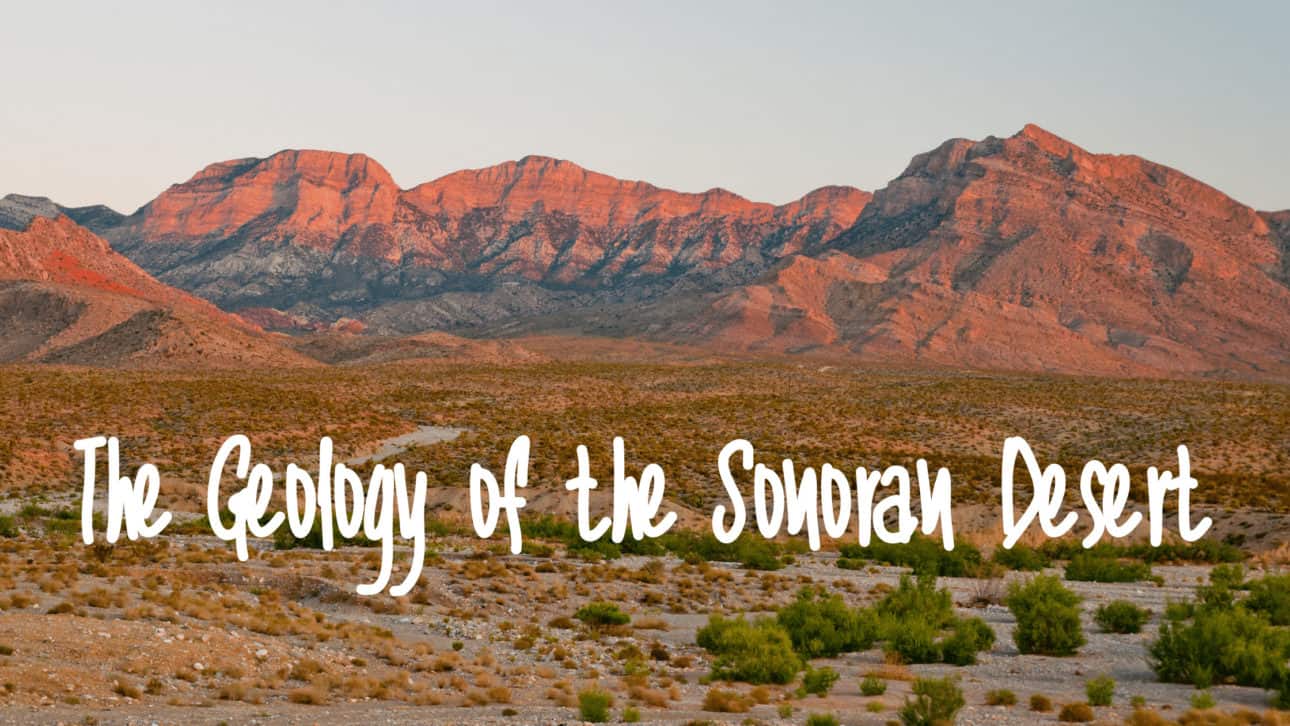- Finding the Right Indoor Plants for Desert Your Home - April 28, 2023
- Common Misunderstanding About Sun Exposure - April 18, 2023
- All about the Arizona Monsoon Season - May 21, 2021
Our beautiful Sonoran Desert is known for its sweeping panoramic beauty. The desert is a harsh and elegant ecosystem comprising tenacious flora and fauna that have adapted to the extremes of climate present throughout the arid Southwest. Below it all, and all around us, is the geology of our desert, full of slow and monumental changes that have shaped this land for eons.
It is humbling to consider geologic time where we have to snap out of human-scale timeframes like weeks, months and decades and begin thinking in thousands and millions of years. It is also hard to recognize that the land we live on is in a constant state of slow change, on a scale we can hardly recognize. Yet, the geology of our region is a key factor in determining the weather and climate of the region, the makeup of our soils and the nature of the biological systems that can sustain themselves here.
Basin and Range
The Sonoran Desert is part of a larger geologic region known as the “Basin and Range Province” and is shaped by the contrast of parallel north-south mountain ranges which confine low-altitude basins. This region extends from northwest Mexico upwards as far as southern Idaho, including a large portion of Nevada, Utah and southeastern California in addition to Arizona.
Mountains block in an arid range that includes the Great Basin Desert, the Mojave Desert and the Sonoran Desert. The extremely low rainfall in these regions is due in part to the “rain shadows” created by the mountain ranges surrounding them. While these climate forces make the mountain-adjacent Mojave hyper-arid, the Sonoran Desert sees a bit more rainfall, as well as incoming moisture from the Pacific Ocean where it surrounds Baja California.
The Mogollon Rim
The northern boundary of the Sonoran Desert is representative of some of the most dramatic geology in the state. The Mogollon Rim is the dramatic transition from the Basin and Range region to the Colorado Plateau. Shaped by layers and layers of mineral deposits over eons, the Mogollon Rim is a mile-high formation cut into by canyons and waterways, most strikingly at the Grand Canyon. Canyon walls in this region display the slow geologic accumulation of sedimentary layers dating back as far as 30 million years.
In geologic perspective, planet Earth itself is estimated to be around four and a half billion years old while homo sapiens have only been around for 200,000 years. The “layer cake” appearance of the sedimentary canyons is not only beautiful, it helps us understand how the landscape has formed and how it continues to change through time.
Shaping the Sonoran
If we go back in time 40 million years the region we inhabit was drastically different. Around this time, the land of the southwest Basin and Range region was relatively flat. This is the cusp of the formation of the mountain ranges and low valleys we see today, with an onslaught of geologic activity around this time called “the Basin and Range disturbance”. This upset was driven by volcanic activity which is still evident in mountains in the area today.
A large amount of close-to-the-surface volcanic activity began softening the mineral crust of the earth, making it essentially stretchable. This was put into play when the Pacific Ocean tectonic plate began shifting northward, pulling on the land of the Basin and Range like geologic taffy.
Over the course of millions of years, mountains began to form both through the responsive arching of the land, and regional stretching caused parallel mountain regions to form, much like stretch marks on a body. This massive shift in geology settled around 8 million years ago.
Modern Geologic Forces
The Sonoran Desert we see today is still being shaped by geological forces. Younger volcanic activity exists throughout the Sonoran Desert, contributing to the minerals and metals that comprise our surface landscape. The limited rainfall of the Sonoran Desert is responsible for carving out land and distributing sand and soil in alluvial fans. Bursts of intense rainfall can reshape rocks and canyons in a flash, reshaping schist and layered bedrock into the dramatic desert rock formations we see today.
“Third Rock from the Sun”
We see the unfolding history of geology everyday in our beautiful Arizona. And, we also know that the sun is a force to be reckoned with! Protect your loved ones and your home by investing in sunscreens for your windows and patio screens. Contact us at CC Sunscreens today!

